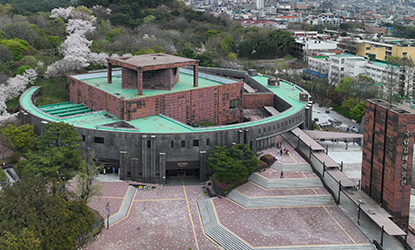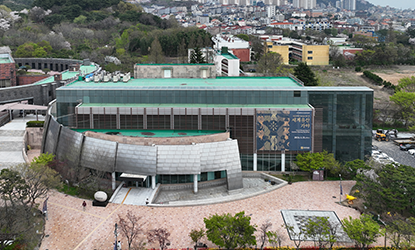History
Gimhae National Museum was opened on July 29, 1998 for the purpose of collecting, compiling, preserving, and exhibiting the cultural heritage of the Gaya Kingdom, a collection of ancient states. Nestled in the foothills of Gujibong Peak—a site associated with the legendary founding of Gaya— Gimhae National Museum is dedicated to collecting and displaying artifacts shedding light on the history and culture of Gaya and Byeonhan, a prehistoric territory near Busan and Gyeongnam that became the cornerstone for Gaya’s growth. Since few written records about Gaya have survived, most of the displays consist of restored artifacts that have been recovered through archaeological studies. This focus on archaeology sets Gimhae National Museum apart from most other branches of the National Museum of Korea.
History of the Museum
- January 22, 2024The grand opening of the permanent exhibition "The Road to Gaya" on the 1st floor and "Gaya and Gaya People" on the 2nd floor.
- July 29, 201820th anniversary of the opening of Gimhae National Museum.
- April 1, 2014Reopening of permanent exhibition hall after second reorganization.
- April 19, 2008Reopening of permanent exhibition hall after first reorganization.
- December 15, 2006Opening of the education center (Gayanuri).
- November 20, 2006Construction of the education center (Gayanuri) is completed.
- November 26, 2004Construction of the education center (Gayanuri) begins.
- 2002 ~ 2003Restructuring of permanent exhibition panels.
- July 29, 1998Opening of Gimhae National Museum.
- March 30, 1998Construction of Gimhae National Museum is completed.
- March 20, 1997Organization chart of Gimhae National Museum is announced.
- December 7, 1992Construction of Gimhae National Museum begins.
- January 1991“Plan to Construct Gimhae National Museum” is announced (14th President’s Pledge).
Construction of the Museum

Gimhae National Museum is located in the foothills of Gujibong Peak, which is designated as a historical site. Given the essential need to achieve harmony with the surrounding landscape and protect the historical and cultural significance of the site, a conventional rectangular building design was not an option. Hence, to represent the coexistence of the past and present at the museum, a circular fence was devised. Rectangular buildings were then designed within the circle, with the remaining area designated as outdoor space.
Through the main gate, the museum meets the city of Gimhae as an integral part of Gujibong Park. These design elements helped establish the museum as a place connecting the present, represented by Gimhae, and the past, represented by Gujibong Peak.
Emerging from the ground as a rectangular shape within the round fence, the main exhibition hall is formed by steel plates that are intended to change color over time, symbolizing both the iron culture of Gaya and the natural changes that accrue over time.
- ArchitectJang Se-yang (1947~1996)

Gayanuri was established as a social education center to provide improved lifelong education services and opportunities to local residents who have a conventional work schedule (i.e., Monday through Friday). The education center was a joint project between the local and national government, as Gimhae city government funded the design, engineering, and land, while the national government covered the cost of construction.
In order to ensure harmony with the existing main hall, the design for the social education center featured round and rectangular shapes with simple geometric proportions. As a result, the education center blends seamlessly into the background of the main hall.
In 2006, the education center was named “Gayanuri” through a naming contest. This name conveys the public’s wish for the education center to share knowledge about the spirit and lives of the people of Gaya and its predecessors, given the center’s location in the former territory of Gaya.
- ArchitectGong Sun-gu (1960~)